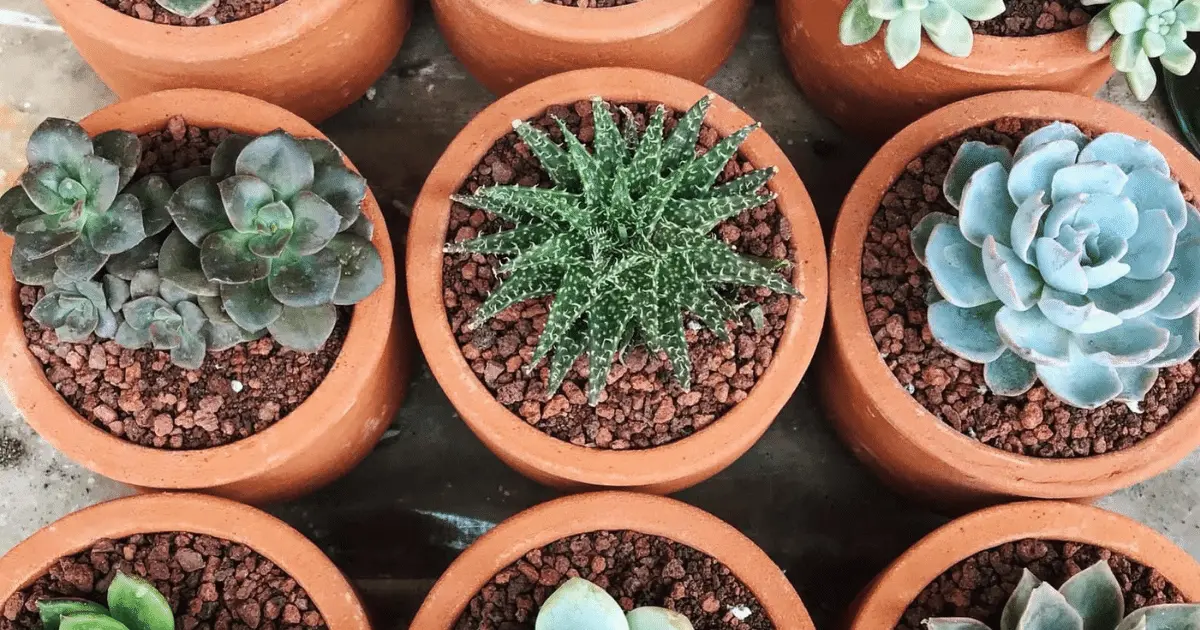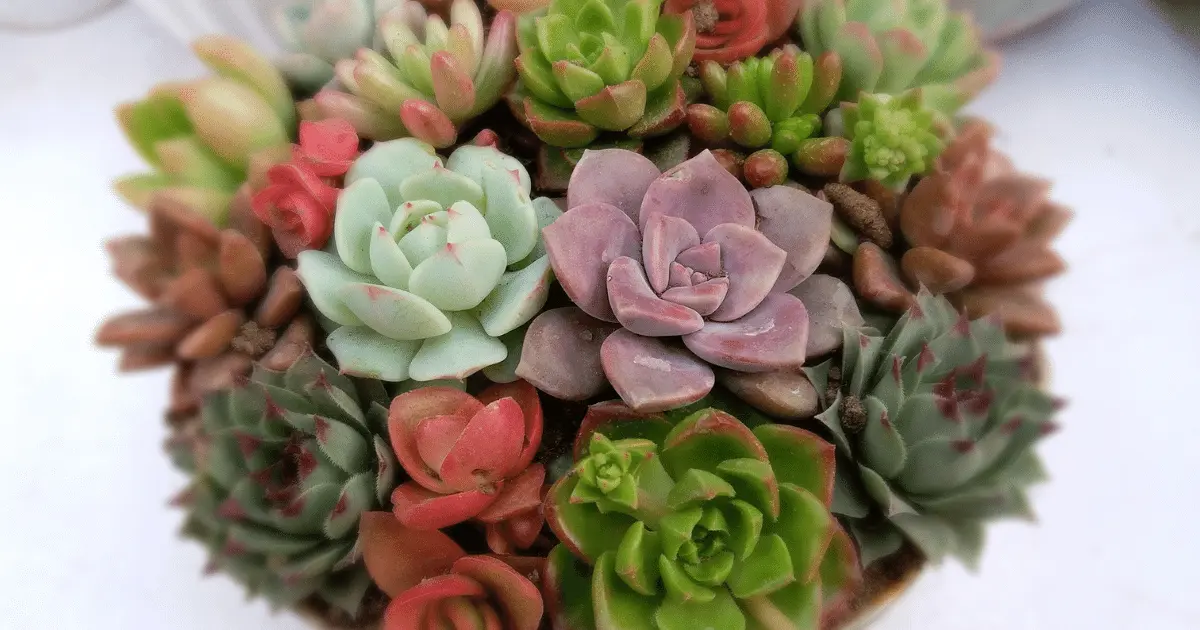There are an infinite number of species of succulents from which to choose. It is always easy for me to find the plant that is an ideal fit for my environment. Succulents are an excellent option for adding a touch of green vitality to various surfaces. I have some positioned on my kitchen countertops, windowsills, and desks.
It doesn’t matter where you plant succulents; you should learn how to water and keep them healthy. There are a few guidelines I can teach you regarding when and how frequently to water your succulents. Doing so will save you from accidentally drowning these precious plants.
How to Water Indoor Succulents

You can water your succulents utilizing the soak-and-dry method approximately once every two weeks. It involves not watering the plant until it has been allowed to dry. After it has completely dried out, you should wait around two weeks before starting the process again.
First, you must determine whether the soil is dry before watering from the surface to the core. If you do not have a moisture meter, you can use a butter knife, a wooden skewer, or even your finger to examine the soil.
Use a watering can with a small spout or a direct watering method to prevent the plant from rotting from water sitting on the leaves. It helps you ensure that you effectively soak the soil for the plant to receive an adequate amount of water. In this approach, you won’t be watering the plant itself; instead, you will just be soaking the surrounding soil.
If the pot has drainage holes, moisten the soil till the water begins to seep out of the drainage hole at the bottom of the container. If the pot does not already have drainage holes, you may either drill them yourself or line the bottom of the container with small garden rocks before you plant. The stones provide a location for the extra water to stay as the soil dries out.
Eventually, the plant’s roots will be able to use this water to rehydrate themselves when it is required. If the container you use does not have drainage holes, pay close attention to the signs that your succulent needs water.
The succulent will have a reduced need for watering as a result. If your succulents do not get a lot of sunlight, you should anticipate watering them less frequently. In general, succulents grown in locations that receive less sunlight will remain moist for longer.
How to Water Succulents in Outdoor Containers

Moving succulents housed indoors in pots to an outdoor location in the summer is advisable. Even though they thrive in bright sunlight, you should give them time to adjust to the outside environment. You can do this by putting them in an area with slight shade for a while before relocating them somewhere sunnier. Between the late morning and mid-afternoon, ensure you do not expose them to direct sunlight.
Remember that plants inside typically require less water than their counterparts outside. Once again, the environmental factors will determine how frequently succulents need watering. Check the condition of the potting soil once a week to see if it is scorched or still has some moisture in it. Pay close attention to whether or not the soil is entirely dry.
How Much Water Should I Give My Succulent?
This is perhaps the question that most new succulent owners often ask, and there’s a good explanation. The amount of water you provide for your succulent directly affects how long it will live. The general rule is never to let your succulents stand in water. It is so because standing water can kill your succulents. Your succulent will perish if you allow it to stand in water.
A succulent may recover from being less watered, but excessive watering will ultimately prove fatal to the plant. The quick response of how much water a succulent is to give it water, but not so much that it is left standing in water. This is the short answer to how much water to provide a succulent.
How Often Should Succulents Be Watered?

The answer to the question of how frequently you should water succulents is dependent on several different factors. These factors include the local climate and temperature. Whether you are growing the succulents indoors or outdoors, the type of container and soil used are factors.
It would help if you watered succulents when the soil felt dry a few inches deep into the pot or ground. Water the plant thoroughly and liberally; you should be able to see water leaking out of the drainage hole in the pot. If you look at the bottom of your container and notice that water is pouring out, you will know that the soil has received the appropriate amount of moisture.
If you are planting succulents directly in the ground, water them until the soil feels like it has the appropriate moisture. In most cases, I give the plants a week’s worth of rest between waterings. When the plant begins to grow in the spring actively, succulents have a greater demand for water than at other times of the year.
It’s possible that during the summer and especially during the winter, water consumption will decrease. During the winter months, when most succulents are dormant and the light reaching them diminishes, their water requirements reduce. When the soil in your succulents becomes dry throughout the winter, you should water them.
This could happen as infrequently as once a month, but the environment of your residence will determine the frequency. The size of the container will also play a role in determining how often to water the plant. The greater the capacity of the container, the more liquid it can store. You may have to water the plants in shallower, smaller pots more regularly.
What Affects How Much I Water my Succulents?
The following are some factors that may influence the amount of water you should give to a succulent:
- Container/Pot
The type of container you use determines how much water you can give the succulent. If the container has a hole in the bottom through which excess water can flow, you can provide the succulent with more water.
If the container does not have a hole, you must be careful with water. Doing this is to avoid filling water to the plant’s roots. In addition, succulents grown in small containers made of clay dry out more quickly and require slightly more water.
- Method of Planting
The way you plant a succulent is a significant determinant. Placing pea gravel in the bottom of the planter raises the succulent’s roots off the bottom, creating space for excess water. In addition, pea gravel makes it simpler for air to enter the pot, which speeds up the drying process. You should transplant your succulent with pea gravel if it were initially planted with anything else.
- Location of the Succulent
If your succulent is inside, away from heat and wind, it will require less water than if kept outside.
- Size of the Plant
Size matters when it comes to succulents. Larger plants require more water than their smaller counterparts.
